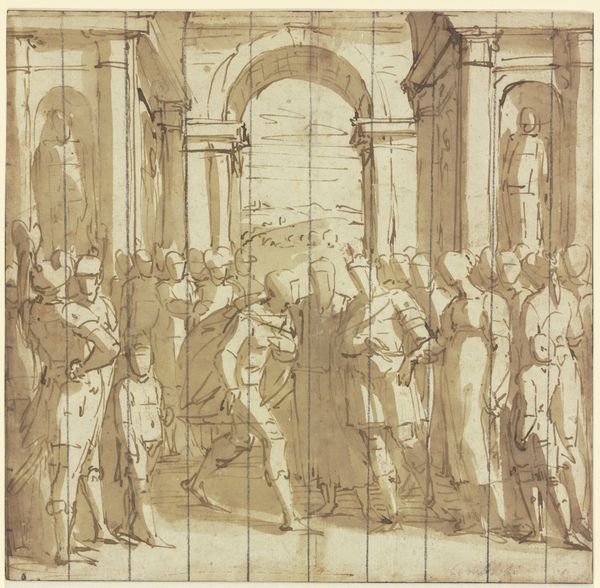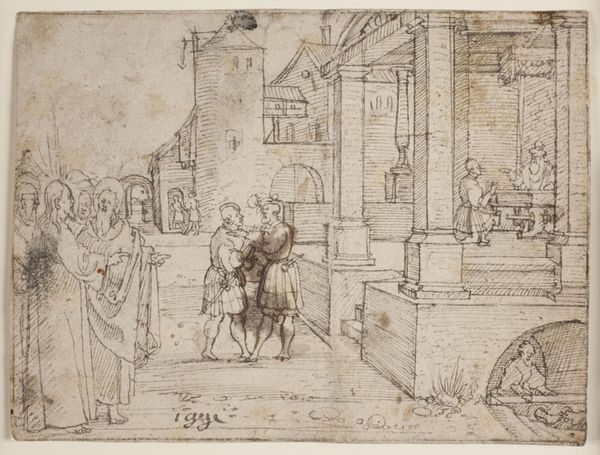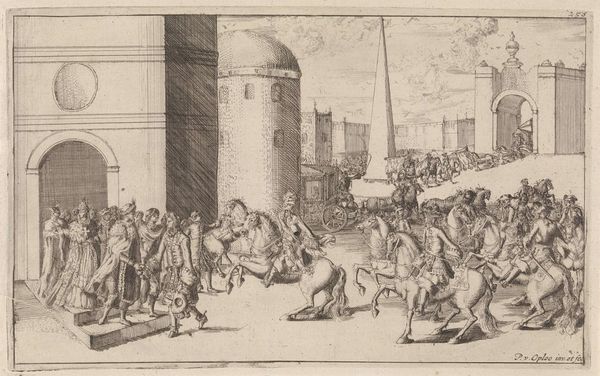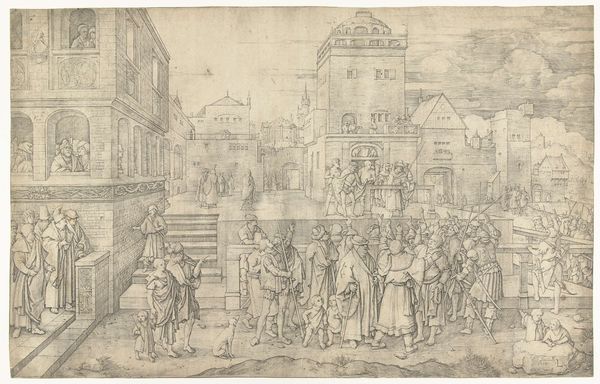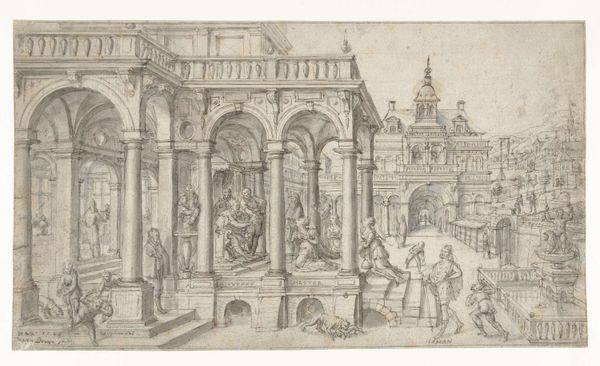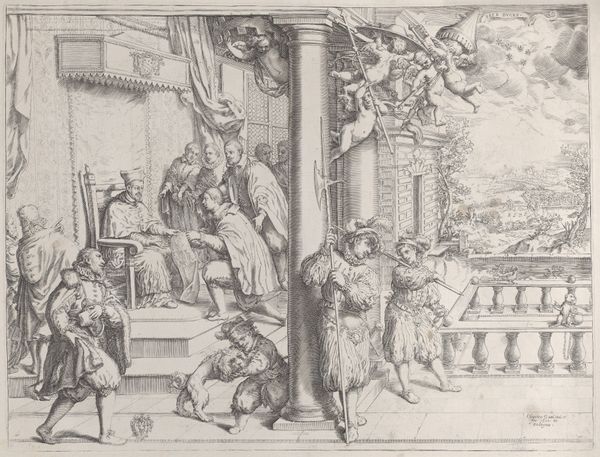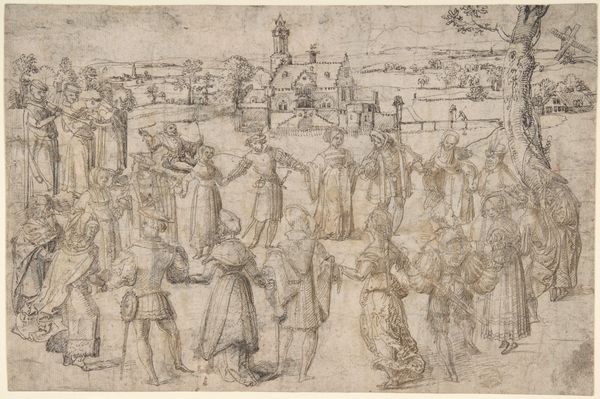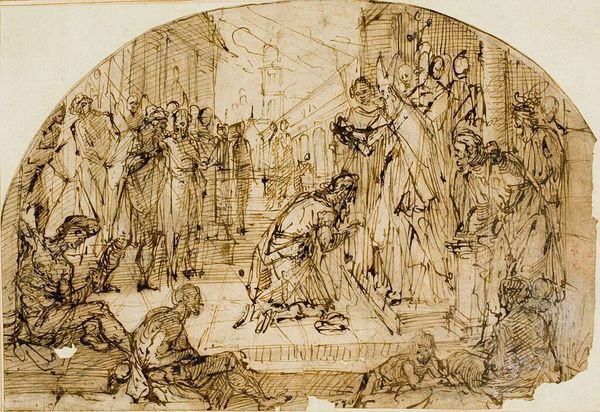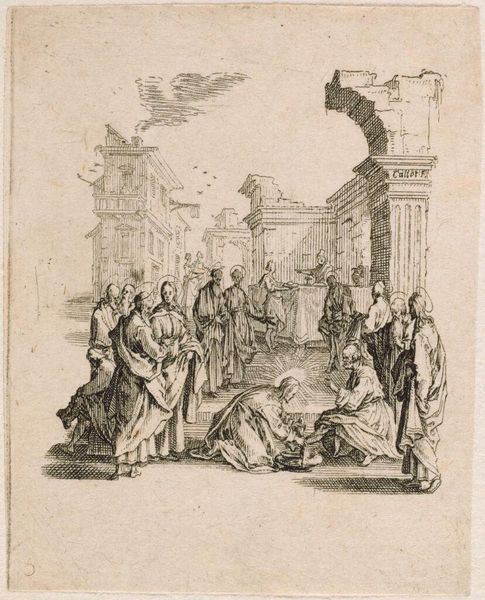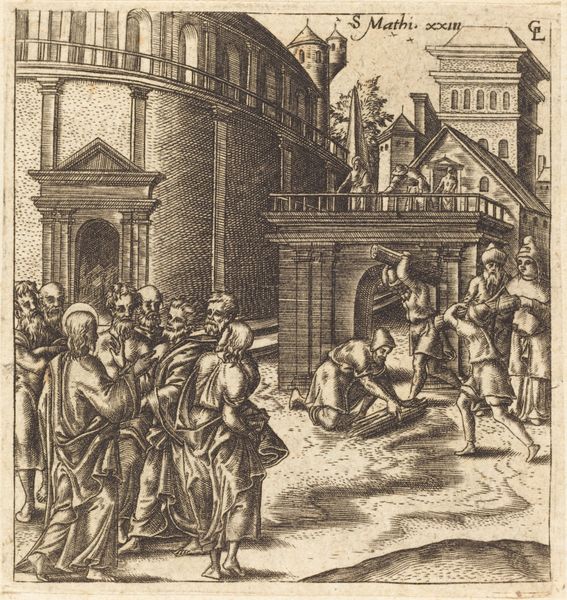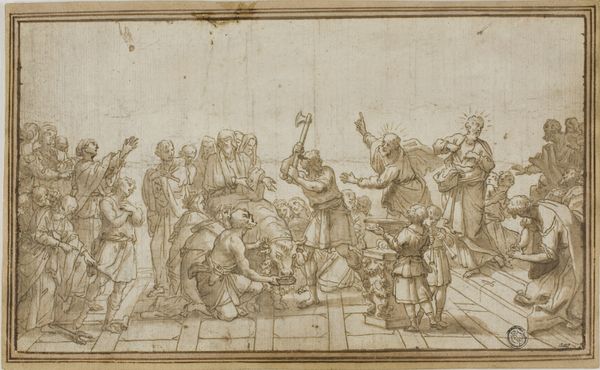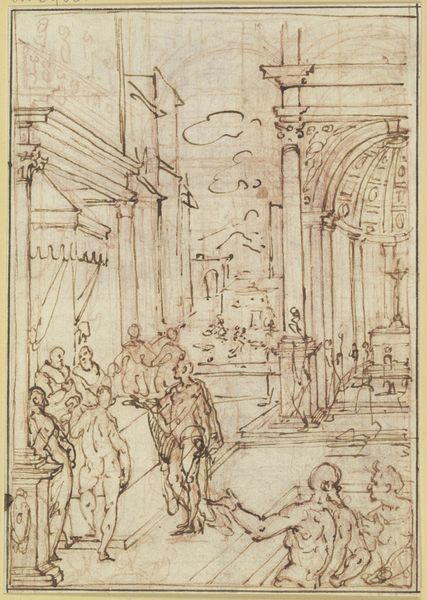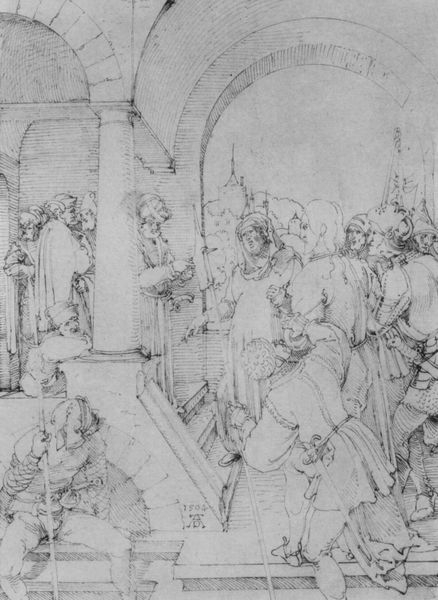
drawing, paper, ink
#
drawing
#
landscape
#
figuration
#
paper
#
11_renaissance
#
ink
#
christianity
#
history-painting
#
christ
Copyright: Public domain
Editor: We're looking at "The Triumph of St George" by Vittore Carpaccio, created around 1502 using ink on paper. It’s a drawing, and it feels… dynamic, even violent, with all these figures densely packed in. What strikes you when you look at this piece? Curator: It’s precisely that energy captured in ink that interests me. Look at how Carpaccio positions Saint George within the landscape. He’s not merely a knight; he’s an agent of change, disrupting the status quo. How does his act of slaying the dragon resonate with the socio-political tensions of the time? Editor: So you see this less as a religious scene and more as a… commentary? Curator: Both! But consider how the religious narrative itself can be a vehicle for exploring anxieties about power, faith, and societal order. What does it mean to portray this specific subject? Christianity and its place at the turn of the century? And who benefits from such representation? Is it only for religious devotion, or something more? Editor: That’s interesting. I hadn’t considered it that way. I was focused on the technical skill, how he captured movement with such simple lines. But thinking about power, I see it differently now. The dragon could represent so many different fears, perhaps internal ones. Curator: Exactly. And within the crowd surrounding this central event, you witness various reactions – indifference, horror, awe. It highlights the complexities within society and reminds us that even in moments of supposed triumph, not all are convinced or converted. What kind of personal experiences may have inspired it? Editor: This really pushes me to look beyond the surface and consider the bigger picture. I initially saw a straightforward depiction of a legend. But now, it opens up into all these avenues of inquiry – thank you. Curator: And thank you for the opportunity to look at this old favourite with fresh eyes, again. Art is made richer in dialogues!
Comments
No comments
Be the first to comment and join the conversation on the ultimate creative platform.
